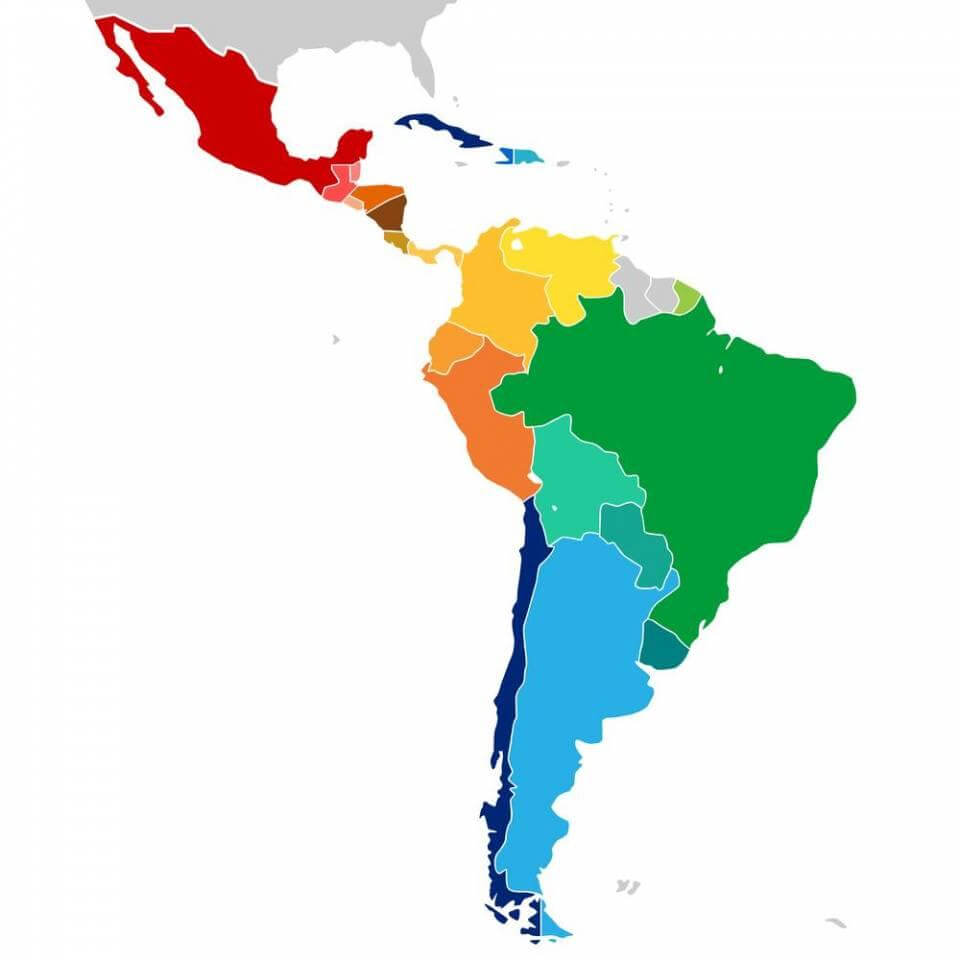Latin America has been a stand out choice for North American companies looking to outsource software development. Various countries within the region has taken the initiative to institute programs that have helped to gain them a share of the software outsourcing market. Latin american children now have access to new education initiatives to improve English fluency, and technology education programs to prepare them for careers in the tech industry. Latin American countries want to be sure they remain highly competitive as nearshoring service vendors.
There are many reasons why Latin America is a prime choice for software outsourcing. The following benefits and interesting new initiatives in various arenas are why companies should be paying more attention to Latin America, and Colombia more specifically.
Geographic location: Latin America’s location puts it in the same time zones as the US, making it easy for US businesses to communicate with partners during regular business hours. This makes frequent, time-sensitive communication feasible and easily implemented.
Capability: The Latin American workforce is highly skilled, especially in the technology sector. Outsourced IT service providers in Latin America provide everything from IT monitoring services to help-desk support. The Colombian government is working to improve the quality of tertiary education and vocational programs by collaborating with the IDB and the World Bank through the research and development program, Colombia Científica. Many tech companies are also pledging money and support to encourage students to gain the skills necessary to enter into the technology fields. Hewlett-Packard, Microsoft, and Cisco have been some of the biggest investors so far.
[INTERESTING READ: Participatory Education: Perficient Latin America Partners with Local Universities]
Infrastructure: Latin American countries are investing in their infrastructure to keep up with the technological advances in North America. These initiatives in infrastructure development give Latin America a strong competitive advantage over offshore service providers. Colombia is by far, the leader in infrastructure investment. With an annual budget of 16 trillion COP$ (about $5.5bn US), they are aggressively developing infrastructure. The Fourth Generation road infrastructure program is the largest of its kind in LatAm. Currently, Colombia is the fourth largest economy in Latin America, with a GDP greater than the combined GDPs of Bolivia, Ecuador, Paraguay, and Bolivia.
The tech infrastructure has also vastly improved with over 96% of Colombian municipalities connected to the internet today, up from 17% in 2010. The program has gone one step further and established digital learning centers in rural municipalities, provided generous internet subsidies, and instituted a disabilities program for hearing- and visually-impaired individuals to access the internet.
Language: Many Latin Americans are fluent English speakers, making communication with US businesses even easier. Multiple nations in Latin America are recognizing the importance of English proficiency within the global economy, and as an indicator of successful business practices. This is evidenced by a growing number of initiatives throughout Latin America to facilitate English learning. In 2004, Colombia instituted the Foreign Languages Competencies Development Programme to help the country reach targeted levels of English-language proficiency by 2019. While slow to take off, the program has made great strides thanks to collaboration with state governments and non-profit organizations and the steady increase in funding for the program.
Additionally, other Latin American countries are improving access to English. For example, Argentinian English teachers have to complete a rigorous 5-year program to teach in public schools, and in 2006, the National Law of Education made it a requirement for public schools to teach English from 4th to 12th grades.
Education: All of this growth has highlighted some shortcomings in Latin America, especially when it comes to human capital, yet these are not problems exclusive to Latin America. To address the issue, the Global Apprenticeship Network (GAN) a Swiss non-profit, has established itself in Colombia, Argentina, and Mexico. The GAN provides a combination of classroom and on-the-job training to help workers gain the skills they need to work in the tech industry.
Major technology companies are also getting involved, such as Hewlett-Packard, SAP, and Microsoft, by creating education and training programs to help Latin Americans acquire the skills they need to work in tech sector careers. Latin Code Week, an SAP initiative, aims to attract at least 400 young people from the four largest economies in Latin America. The New Employment Opportunities (NEO) initiative is an initiative that allies major companies with the public sector and civil society to train over a million youth for training and job placement.
Additionally, Colombia’s President Juan Manual Santos has pledged to invest over $1.75b in the public education system in Colombia to build new schools and improve those that are lacking high-quality facilities and technology. The country has also been using statistical results to drive education initiatives and inform new policies.
Latin America is the choice for nearshoring services for clients located in North America. Colombia is especially a standout option when it comes to language, infrastructure investment, and capability. With more and more companies shifting to outsourcing software services, it’s important to do it right the first time.
Perficient Latin America can help you determine if outsourcing you software development makes sense. Contact us today to start a conversation.

